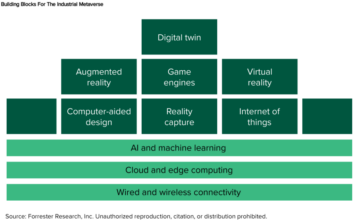
The Markets in Crypto-Assets Regulation (MiCAR) is a groundbreaking legislation that aims to establish a unified and comprehensive framework for regulating crypto-assets and related services in the European Union (EU). MiCAR was adopted by the European Parliament and the Council of the EU in June 2023 and came into effect on 29 June 2023. It will be enforceable from 30 December 2024, with certain provisions taking effect from 30 June 2024.
Expected to have a significant impact on the crypto-asset market, MiCAR will bring about legal certainty, consumer protection, market integrity, and financial stability. Furthermore, it is set to promote innovation and competition by facilitating cross-border operations and offering passporting rights for crypto-asset service providers (CASPs) operating in the EU. Nonetheless, MiCAR presents challenges and responsibilities for crypto-asset issuers and CASPs, as well as additional obligations for other financial institutions and investors involved in crypto-asset transactions. This article will provide a technical breakdown of the key aspects of MiCAR.
The definition and categorization of crypto-assets under MiCAR
MiCAR defines crypto-assets as “a digital representation of value or rights, which can be electronically transferred and stored, utilizing distributed ledger technology or similar technology.” This inclusive definition covers various crypto-assets, including cryptocurrencies, tokens, stablecoins, and non-fungible tokens (NFTs).
It is important to note that MiCAR excludes crypto-assets that qualify as financial instruments, deposits, structured deposits, electronic money, securitization positions, insurance products, or pension products under existing EU financial services legislation. These excluded crypto-assets remain subject to sector-specific rules and regulations.
MiCAR distinguishes between three main categories of crypto-assets:
- E-money tokens (EMTs): These are crypto-assets that aim to maintain a stable value by referencing the value of an official currency. Examples include Tether (USDT) and USD Coin (USDC).
- Asset-referenced tokens (ARTs): These are crypto-assets that maintain a stable value by referencing another value, commodity, or a combination of assets.
- Other tokens: These are crypto-assets with diverse purposes and characteristics, including utility tokens, payment tokens, and hybrid tokens.
MiCAR also introduces the concept of significant tokens for EMTs and ARTs, which are subject to additional requirements due to their potential impact on financial stability or monetary policy. The European Banking Authority (EBA) is responsible for identifying and monitoring significant tokens based on specific criteria.
The authorization and supervision requirements for crypto-asset issuers and CASPs
Crypto-asset issuers
Crypto-asset issuers are individuals or entities offering crypto-assets to the public or seeking admission of crypto-assets to trading platforms. MiCAR mandates crypto-asset issuers to meet certain obligations:
- White paper: Crypto-asset issuers must prepare and publish a white paper disclosing essential information about the project.
- Authorization: Issuers of EMTs and ARTs must obtain authorization from their home member state’s competent authority.
- Supervision: Issuers of EMTs and ARTs are subject to ongoing supervision by the competent authority.
Crypto-asset service providers
Crypto-asset service providers are individuals or entities offering professional services related to crypto-assets. MiCAR imposes obligations on CASPs:
- Authorization: CASPs must obtain authorization from their home member state’s competent authority before providing services.
- Supervision: CASPs are subject to ongoing supervision by the competent authority.
- Prudential requirements, conduct of business rules, safeguarding requirements, and AML/CTF obligations are also applicable to CASPs.
Transitionary provisions and exemptions
MiCAR includes transitionary provisions and exemptions for crypto-asset issuers and CASPs already operating in the EU before the application date of MiCAR.
- Grandfathering clause: Issuers and CASPs authorized before the application date can continue operations until 30 June 2025, subject to national rules and regulations.
- Pilot regime for DLT market infrastructures: A pilot regime is introduced for DLT market infrastructures to test DLT in trading and settlement services.
- Exemptions for central banks and public authorities: Certain crypto-assets and services provided by central banks or public authorities are exempt from MiCAR.
Implications of MiCAR for investment firms and the travel rule
MiCAR also has implications for investment firms and the travel rule:
- Investment firms: Investment firms authorized under MiFID II may provide crypto-asset services related to financial instruments without additional authorization but must comply with MiFID II rules and MiCAR requirements.
- Travel rule: CASPs involved in crypto-asset transfers must exchange specific information to prevent money laundering and terrorist financing.
Leading EU jurisdictions for MiCAR compliance and regulatory arbitrage
Several EU jurisdictions stand out for MiCAR compliance and regulatory arbitrage due to their national regimes:
- France: Offers a supportive regulatory environment and innovative initiatives in the crypto-asset space.
- Germany: Known for its robust regulatory framework and diversified crypto-asset ecosystem.
- Malta: Positioned as a global hub for crypto-assets with a comprehensive regulatory regime.
Conclusion
MiCAR aims to create a harmonized framework for regulating crypto-assets in the EU, bringing legal certainty and fostering innovation. While providing benefits, MiCAR also presents challenges and obligations for stakeholders in the crypto-asset market. The future development and implementation of MiCAR will shape the landscape of the crypto-asset industry in the EU.
#Technical #Break #Markets #Crypto #Assets #Regulation
- SEO Powered Content & PR Distribution. Get Amplified Today.
- PlatoData.Network Vertical Generative Ai. Empower Yourself. Access Here.
- PlatoAiStream. Web3 Intelligence. Knowledge Amplified. Access Here.
- PlatoESG. Carbon, CleanTech, Energy, Environment, Solar, Waste Management. Access Here.
- PlatoHealth. Biotech and Clinical Trials Intelligence. Access Here.
- Source: https://cryptoinfonet.com/regulation/analyzing-the-technical-aspects-of-regulation-in-crypto-asset-markets/
- :has
- :is
- 2023
- 2024
- 2025
- 29
- 30
- a
- About
- Additional
- adopted
- aim
- aims
- already
- also
- an
- analyzing
- and
- Another
- applicable
- Application
- arbitrage
- ARE
- article
- Arts
- AS
- aspects
- asset
- Assets
- Authorities
- authority
- authorization
- authorized
- Banking
- Banks
- based
- BE
- before
- benefits
- between
- Breakdown
- bring
- Bringing
- business
- but
- by
- came
- CAN
- categories
- central
- Central Banks
- certain
- certainty
- challenges
- characteristics
- Coin
- combination
- commodity
- competent
- competition
- compliance
- comply
- comprehensive
- concept
- Conduct
- consumer
- Consumer Protection
- continue
- Council
- covers
- create
- criteria
- cross-border
- crypto
- crypto asset
- crypto-assets
- cryptocurrencies
- CryptoInfonet
- Currency
- Date
- December
- Defines
- definition
- deposits
- Development
- digital
- Disclosing
- distinguishes
- distributed
- Distributed Ledger
- distributed ledger technology
- diverse
- diversified
- DLT
- due
- EBA
- ecosystem
- effect
- Electronic
- electronically
- enforceable
- entities
- Environment
- essential
- establish
- EU
- European
- European banking
- European Banking Authority (EBA)
- European Parliament
- european union
- European Union (EU)
- examples
- exchange
- excluded
- exempt
- existing
- facilitating
- financial
- Financial institutions
- Financial Instruments
- financial services
- financial stability
- financing
- firms
- For
- fostering
- Framework
- from
- Furthermore
- future
- Global
- groundbreaking
- Have
- Home
- HTTPS
- Hub
- Hybrid
- identifying
- ii
- Impact
- implementation
- implications
- important
- in
- include
- includes
- Including
- Inclusive
- individuals
- industry
- information
- infrastructures
- initiatives
- Innovation
- innovative
- institutions
- instruments
- insurance
- integrity
- into
- introduced
- Introduces
- investment
- investment firms
- Investors
- involved
- issuers
- IT
- ITS
- june
- jurisdictions
- Key
- known
- landscape
- Laundering
- Ledger
- Legal
- Legislation
- LINK
- Main
- maintain
- mandates
- Market
- Markets
- May..
- Meet
- member
- Monetary
- Monetary Policy
- money
- Money Laundering
- monitoring
- must
- National
- Navigation
- NFTs
- non-fungible
- non-fungible tokens
- NON-FUNGIBLE TOKENS (NFTS)
- nonetheless
- note
- obligations
- obtain
- of
- offering
- Offers
- official
- on
- ongoing
- operating
- Operations
- or
- Other
- out
- Paper
- parliament
- payment
- pension
- pilot
- Platforms
- plato
- Plato Data Intelligence
- PlatoData
- policy
- positioned
- positions
- potential
- Prepare
- presents
- prevent
- Products
- professional
- project
- promote
- protection
- provide
- provided
- providers
- providing
- public
- publish
- purposes
- qualify
- Reading
- referencing
- regime
- regimes
- regulating
- Regulation
- regulations
- regulatory
- related
- remain
- representation
- Requirements
- responsibilities
- responsible
- rights
- robust
- Rule
- rules
- safeguarding
- sector-specific
- Securities
- securitization
- seeking
- service
- service providers
- Services
- set
- settlement
- Shape
- significant
- similar
- Space
- specific
- Stability
- stable
- Stablecoins
- stakeholders
- stand
- stored
- structured
- subject
- supervision
- supportive
- taking
- Technical
- Technology
- terrorist
- terrorist financing
- test
- Tether
- Tether (USDT)
- that
- The
- The Future
- The Landscape
- their
- These
- this
- three
- to
- Tokens
- Trading
- Trading Platforms
- Transactions
- transferred
- transfers
- travel
- Travel Rule
- under
- unified
- union
- until
- USD
- USD Coin
- USD Coin (USDC)
- USDC
- USDT
- utility
- Utilizing
- value
- various
- was
- webp
- WELL
- which
- while
- white
- white paper
- will
- with
- without
- zephyrnet











